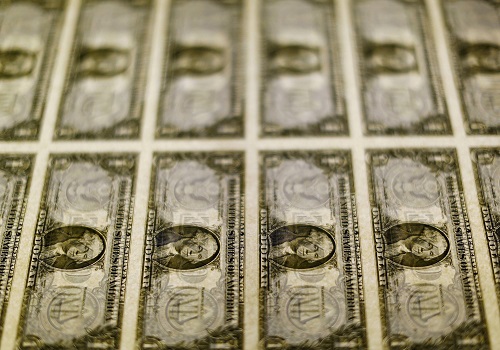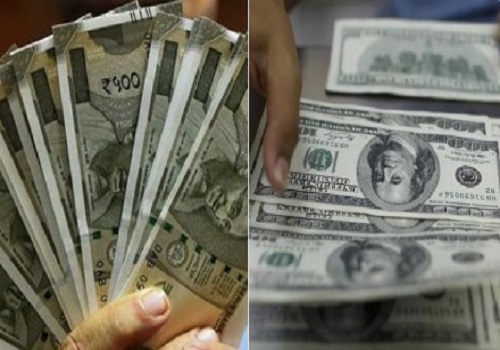Banking Sector Update : Currency note withdrawal CNW 2023 Net positive for the financial sector by Emkay Global Financial Services

The RBI has announced the withdrawal of Rs2000 notes from circulation, which the regulator claims is not used much for transactions and thus will be withdrawn from the system (a similar move was taken in 2013-14 to withdraw pre-2005 Rs500 notes). We, hereby, evaluate the impact of the Currency Note Withdrawal (CNW) 2023 vs. DeMon 2016 on the financial sector:
DeMon 2016 déjà vu?
During 2016 DeMon, notes valuing Rs15.5trn/86.9% of notes under circulation were demonetized, while Rs500/1,000 notes were rendered immediately illegal, thus leading to a meaningful impact on the economy/banks. The CNW 2023 scheme is a far diluted version, as the printing of Rs2000 notes was stopped long back in 2018-19, while residual notes valuing just Rs3.6trn (10.8% of notes in circulation as of Mar-31, 2023/2% of current deposit base) currently in circulation will remain legal tender and would be allowed to be exchanged/deposited with banks till Sep. 30, 2023. Our discussion with bankers suggests that post Sep. 30, 2023, either the RBI will extend the deadline with strict exchange norms or will allow it to be exchanged directly with the RBI or immediately make it an illegal tender to hold (eventually thus making this move eventually as Mini-DeMon). Additionally, these notes are not used much for small transactions, barring large-value asset purchase and cash savings/holdings by households/businesses. Thus, transactional disruption should be minimal. That said, high-value cash transactions to buy gems/jewelry, phones, real estate and luxury items (including watches) may surge in the near term.
Will lead to net deposit uptick, though in a limited way, unlike DeMon 2016
DeMon 2016 had led to a sharp surge in deposits (net Rs6.9trn from Nov-16 to Mar-17 vs. BAU @ Rs5.8trn from Nov-15 to Mar-16) mainly via CASA (400bps) for banks with PSBs gaining a disproportionate share, including via Jandhan a/cs, thereby calling for liquidity absorption measures by the RBI, including reverse repos, 100% CRR maintenance, issuance of Cash Management Bills (CMBs) and later treasury bills (Tbills). On the other hand, credit growth had collapsed to 4.6% by Mar-17 from 9% preDeMon. This time around, the exchange value at banks is higher at Rs20,000 (vs. Rs4,000 initially during 2016), and the total currency to be demonetized is far lower at Rs3.8trn vs. Rs15.5trn during 2016. Thus, bankers expect net deposit mobilization (adj. for withdrawals) to be limited after the initial surge. That said, bankers believe any incremental deposit windfall is welcome at this juncture amid the tight liquidity condition, while it may even precipitate moderation in deposit/call money/G-Sec rates amid increased signs of early policy rate easing. Additionally, banks had benefited via lower deposit costs at a later stage post DeMon 2016, but initial operational/business impact (fall in LDR to 69-72% from 75%, operational cost/fee waivers) was significantly higher, which we believe will be far limited this time around. We believe DeMon 2016 had led to a meaningful change in saving/investment habits of consumers, while it proved to be a watershed event for digitization and even payment/cards business; however, the current move will have limited benefit, as these notes are not being much used for transactional purposes.
Not much impact expected on asset quality
The overall asset-quality impact of DeMon 2016 was contained on the banking sector due to the RBI’s intervention, including the prompt payment incentive scheme (3% on crop loans), additional working capital for MSEs and so on. However, NPA recognition dispensation for NBFC-MFIs was misinterpreted as repayment holiday, which coupled with the impact on cash-dependent rural borrowers, led to a sharp surge in NPAs for MFIs ( PAR +90 jumped to 8.8%). We believe the economic disruption of the current move will be limited as other denomination notes will remain in circulation and, thus, may not have much business/collection disruption. NBFCs as well as MFIs have also come a long way in terms of reducing cash collections and, hence, should limit the impact, if any.
To Read Complete Report & Disclaimer Click Here
For More Emkay Global Financial Services Ltd Disclaimer http://www.emkayglobal.com/Uploads/disclaimer.pdf & SEBI Registration number is INH000000354
Above views are of the author and not of the website kindly read disclaimer










Tag News
More News

Financials Sector Update : NIM contraction to continue; remain watchful of potential turn in...









